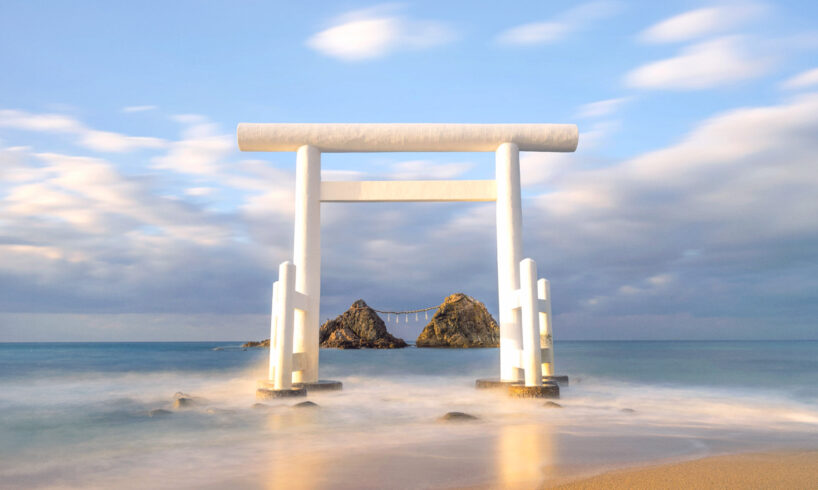
Many people visiting Japan never make it to Kyushu — and honestly, that’s their loss. Japan’s third-largest island, situated in the country’s southwest, the Kyushu region is lush and beautiful, known for its dramatic volcanic landscapes, abundant onsen, pristine beaches and relaxed local culture.
You’ll find hot springs that shroud the landscape in steam, ancient shrines hidden in forests, seaside towns that haven’t changed in decades, delicious local cuisine and countless museums and heritage sites.
What follows is a broad introduction to the region: not an exhaustive list, but more of a curated overview to spark inspiration. We suggest delving further into each prefecture and city mentioned to decide which spots to travel to.
fukuoka
Must-Visit Cities in Kyushu
Fukuoka
Fukuoka city offers a fantastic blend of natural landscapes, rich history and delicious cuisine, which is why it remains one of Kyushu’s most popular destinations. Among its top historical sites are the Fukuoka Castle Ruins, where stone foundations and walking paths weave through Maizuru Park, and the ancient Kushida Shrine, host of the annual Hakata Gion Yamakasa festival. For panoramic city views, Fukuoka Tower is a must-visit. The expansive Ohori Park is another top destination, providing a serene escape with its large pond and scenic gardens.
Fukuoka also has a worldwide reputation as a gourmet city, famous for its tonkotsu ramen and the lively yatai (street food stalls) found in areas like the southern end of Nakasu Island and Tenjin. Shopping is also a highlight, with sleek, modern complexes like Canal City Hakata — complete with its own canal and fountains — and the vast retail and dining hub around Hakata Station. The city is known for its livability, with excellent public transportation and laid-back, friendly atmosphere.
Nagasaki
Nagasaki is a city of profound historical significance and captivating beauty. It serves as a powerful reminder of the atomic bombing in 1945, with the Nagasaki Peace Park and Nagasaki Atomic Bomb Museum providing solemn spaces for reflection.
Beyond this critical history, Nagasaki also boasts a rich legacy as Japan’s primary gateway to the West during centuries of national isolation, evident in sites like the reconstructed historical residences of Dejima and the charming Glover Garden with its historic Western-style mansions overlooking the harbor. Visitors can also look forward to Nagasaki Shinchi Chinatown, one of Japan’s three major Chinatowns, as well as one of Japan’s “three best night views” from atop Mount Inasa.
Kagoshima
Kagoshima city, nicknamed the “Naples of the East” due to its bay and subtropical climate, is home to volcanic landscapes, historical sites and a rich hot spring culture. The city is famously close to Sakurajima, an active volcano located just across Kagoshima Bay. It can be admired from various viewpoints, or visited directly via a short ferry ride.
History buffs will enjoy Sengan-en, an expansive Japanese landscape garden and historic villa overlooking Sakurajima and Kagoshima Bay, and the nearby Museum of the Meiji Restoration, which details the region’s pivotal role in Japan’s modernization. For a truly unique experience, head to Ibusuki Onsen for its famous natural sand baths, where you can be buried in geothermally heated sand for detoxing.
Kagoshima city also offers delicious local cuisine — including Kagoshima black beef and black pork, and a lively shopping scene in the Tenmonkan district.
Beyond the city, Kagoshima Prefecture has diverse attractions like the ancient cedar forests of Yakushima Island — which famously provided inspiration for Princess Mononoke — and the pristine beaches of the Amami Oshima islands.
Read our guide to adventure tourism in Kagoshima Prefecture here.
itoshima
Nature Spots in Kyushu
Itoshima
Itoshima is part of the picturesque peninsula at the western edge of Fukuoka Prefecture, and is less than an hour away from Fukuoka City by train.
One of its most iconic landmarks is Meoto Iwa, “wedded rocks” joined by a sacred rope, symbolic of a happy marriage. Located offshore in northern Itoshima, the rocks are framed by a distinctive white torii gate. Itoshima is also home to the mysterious Keya no Oto basalt cave, and the cascading Shiraito Falls.
Beyond its scenic landscapes, Itoshima is celebrated for its fresh seafood, particularly its oyster huts in the winter. The area’s laid-back atmosphere is perfect for outdoor activities like surfing, hiking, cycling or simply gazing at sunsets by the beach.
Mount Aso
Mount Aso, located in Kumamoto Prefecture, is one of Japan’s most impressive natural wonders, boasting one of the world’s largest active calderas. It’s famed for its dramatic volcanic landscapes, particularly the steaming Nakadake Crater (though access is often restricted due to volcanic activity or gas levels, so checking current conditions is crucial).
The vast Kusasenri grassland within the Aso Geopark offers stunning views, often dotted with grazing horses and cattle, providing opportunities for scenic walks and horseback riding. Beyond the volcanic spectacle, the Aso region is rich in hot springs, such as Uchinomaki Onsen, and offers various outdoor activities like paragliding and cycling.
For more about Aso, read our full guide to the city.
Takachiho Gorge
Takachiho Gorge, situated in the mountains of Miyazaki Prefecture, is a breathtaking natural spectacle renowned for its dramatic columnar basalt cliffs carved by the Gokase River. Formed by the erosion of lava from Mount Aso, the gorge’s nearly-sheer rock faces, said to resemble dragon scales, create an otherworldly scene when viewed from a rowboat gliding along its emerald green waters.
The highlight is the Manai Falls, a 17-meter waterfall cascading directly into the gorge, often creating rainbows in its mist. Visitors can enjoy a leisurely boat ride for an up-close perspective or stroll along the paved walking path that winds through the gorge, admiring this natural monument and its unique geological formations.
Beppu
Tucked into the northeastern edge of Oita Prefecture, this coastal city is one of the most prolific hot spring areas in the world, bubbling with geothermal activity. What makes Beppu unforgettable isn’t just the sheer number of onsen — it’s the spectacle of it all: steaming vents rising from street corners, sand baths on the beach and mineral-rich waters in every possible hue.
The city is best known for its “Hells of Beppu” (Jigoku Meguri), a series of dramatic hot spring displays featuring cobalt-blue pools, boiling mud and even geysers. While these aren’t for bathing, they offer a surreal glimpse into the raw power beneath the surface. For a more relaxing experience, visitors can soak in traditional outdoor baths overlooking the mountains or sea. Read our full guide to Beppu here.
Kirishima
Kirishima, located on the border of Kagoshima and Miyazaki Prefectures, is a region of stunning natural beauty and deep mythological roots. The Kirishima mountain range was designated as Japan’s first national park, and encompasses over 20 mountains. This includes the sacred Mount Takachiho no Mine, where the god Ninigi no Mikoto is said to have descended to Earth.
Visitors can enjoy hiking trails leading to picturesque volcanic lakes like Lake Onami-ike, or simply soak in the rejuvenating waters of the numerous hot spring villages, such as Kirishima Onsen. Kirishima-Jingu Shrine, often called the “Nikko of the West” for its ornate vermilion architecture, is another must-visit site.
Kumamoto Castle
Cultural Sites and Heritage Towns
Kumamoto Castle
Kumamoto Castle is considered one of Japan’s most impressive and well-fortified castles, known for its commanding black exterior, intricate defensive features and pivotal role in Japanese history, particularly during the Satsuma Rebellion of 1877. Originally completed in 1607 by feudal lord Kato Kiyomasa, the castle suffered significant damage in the 2016 Kumamoto earthquakes. Extensive and meticulous restoration efforts are ongoing, but visitors can still explore the castle grounds and its panoramic views.
Usuki Stone Buddhas
The Usuki Stone Buddhas are a remarkable collection of ancient Buddhist statues carved directly into soft tuff cliffs in Usuki, Oita Prefecture. Dating back to the late Heian (794-1185) period, these 61 carvings, designated as National Treasures, are unique in Japan for their scale and artistic quality. Divided into four main clusters, they showcase a variety of expressive figures, offering a glimpse into ancient Japanese religious art.
Okawachiyama Village
Okawachiyama Village, often called the “Village of Secret Kilns,” is a picturesque, secluded settlement in Imari, Saga Prefecture. Historically, it served as the highly guarded official kiln of the Nabeshima clan during the Edo period, producing exquisite Nabeshima ware porcelain. Today, its charming streets are lined with traditional pottery houses and distinctive chimneys, where visitors can explore active kilns, browse beautiful ceramics and experience the rich legacy of Japanese craftsmanship.
Obi Castle Town
Obi Castle Town, located in Nichinan city, Miyazaki Prefecture, is a beautifully preserved site that transports visitors back to the Edo period. Once a prosperous samurai district under the Ito clan, it features moss-covered stone walls, traditional samurai residences and charming merchant streets lined with shops selling local delicacies. The meticulously reconstructed Ote-mon gate and other Edo-period structures, often built with prized Obi cedar wood, allow for a captivating stroll through a bygone era.
Yoshinogari Historical Park
Yoshinogari Historical Park in Saga Prefecture is one of Japan’s largest and most important archaeological sites from the Yayoi Period (around 500 B.C.E. to 300 C.E.). It offers a remarkable window into ancient Japanese life, featuring reconstructed villages, dwellings, watchtowers and burial mounds within a sprawling moated settlement. Visitors can explore these structures, see unearthed artifacts and even participate in hands-on activities that recreate Yayoi-era skills, providing an immersive experience of this pivotal period in Japanese history.





